

Louise Hearman's dark, Gothic palette makes the spectral palatable. Her shadowy and deliberately untitled paintings accentuate a sense of mystery and unease; viewers can become lost in these works, like the protagonist in a gloomy fairy-tale. There is little to guide one out of the velvety stygian darkness. Part Edgar Allan Poe and part Donna Tart, these could be illustrations from a gruesome children's story: Hansel and Gretel meets The fall of the house of Usher.
There is a sense of impending events or recently concealed misadventure in these works. In Untitled #540 (1997), partially hidden in shadows, the witness could be closing in on a crypt, a cavernous entrance made visible by the watery light of the moon. In Untitled #539 (1997), the pot of gold at the end of the rainbow is obscured in inky blackness. The odd light and threatening clouds suggesting an arduous, perhaps impossible, journey. Similarly, in Untitled #546 (1997), the sky-scape takes on Wagnerian proportions.
Hearman first drew attention during the 1980s for her finely rendered drawings and technically adroit oil paintings. Developing during the theory-laden days of the 1980s, her work evolved in a distinctly personal way. Despite the coolness of much art created in that period, Hearman struck a chord. Her powerful narrative-nightmare stream ran parallel to the cooler theoretical trends. The surreal, the mythical and the Gothic were all out of fashion in the visual arts. Her work wasn't playing with or quoting the Gothic in a kitsch, pop art style—it was Gothic. If anything, Hearman's style reflects a broader, more popular sensibility than that of the theoretical end of the art world. Ironically, given the prevalence of darkness in popular music and film of the time, Hearman, if anything, was more 'pop' than those artists playing with new media and new theoretical stances.
To an audience familiar with film noir, Gothic horror and fairy tales, Hearman's work may seem eerily familiar, even attractive, but as Maria Prendergast has noted:
Turbulent, billowing skies, blond ethereal children, shaded roads, hovering, spectre-like shapes and amorphous animals recur in Hearman's paintings. Her imagery allows us to glimpse a world of infinite possibility. This is not a world where the viewer is offered an invitation to "step right in". There is a gossamer-thin but seemingly invincible barrier between us and this seductive other place.1
While there are hints of film noir mixed with soap opera melodrama, the artist refuses easy categorisation. It is easy to fall into cliché when speaking of these works: the Gothic, the erotic, the apocalyptic, the operatic, the surreal. Somehow these paintings are all of those things and yet still manage to avoid categorisation. That they are cinematic is beyond dispute, but it is not the formulaic, spooky landscape of Sleepy hollow. Hearman's work is too personal for that, with its foundations lying ultimately in the painterly, rather than the cinematic, tradition. Nick Waterlow noted that:
One can sense here the meaningful presence of Leonardo, Goya, Fuseli, Monet, Redon, Böcklin, Felician Rops, Franz von Stuck, Jean Delville and the Pre-Raphaelites as well as Tom Roberts and Frederick McCubbin.2
But as Waterlow went on to note, Hearman's art, 'like that of the last fin de siècle which flaunted the life of the imagination in the face of the dominant materialism, also revels in bringing to the fore what others suppress ... to snap open the recesses of our imagination and allow engagement with the darker side of the psyche. This is not a characteristic of Australian painting'.3 However, in the context of Australian painting Hearman harks back to the darkest imagery of Arthur Boyd and Albert Tucker where darkness dominates, or to the photographic density and drama of her contemporary, Bill Henson.
Hearman likes to maintain the mystery. Perhaps it derives from a cultural tradition, perhaps from what she sees about her in daily life—a world not quite our own. Hearman seems to take great joy in the dark, as if in a weird way it was fun to delve into these threatening corners, to skip and dance around the macabre and to laugh in the face of unspecified evil. There is an element of humour here, as though the artist is throwing down the gauntlet. Come on, be afraid, be very afraid, as she laughs on the other end of the paint brush.
- Ashley Crawford
Louise Hearman is represented in Australia by Tolarno Galleries, Melbourne and Roslyn Oxley9 Gallery, Sydney.